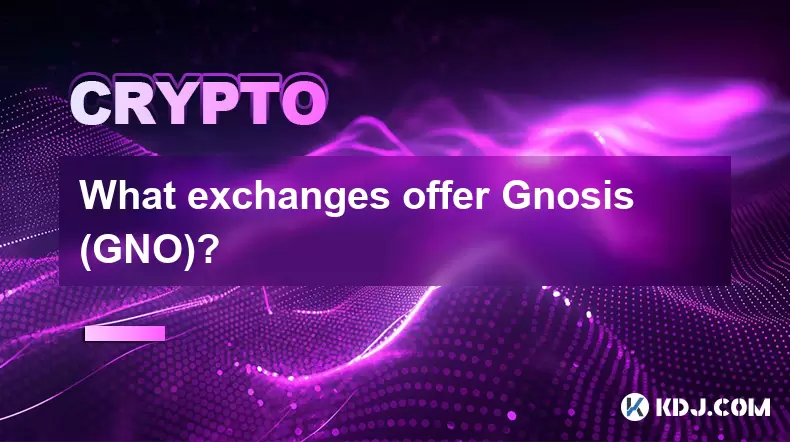-
 Bitcoin
Bitcoin $119000
-2.21% -
 Ethereum
Ethereum $4315
1.01% -
 XRP
XRP $3.151
-3.11% -
 Tether USDt
Tether USDt $0.0000
0.00% -
 BNB
BNB $808.5
-0.71% -
 Solana
Solana $175.8
-4.21% -
 USDC
USDC $0.9999
0.00% -
 Dogecoin
Dogecoin $0.2250
-3.92% -
 TRON
TRON $0.3469
1.77% -
 Cardano
Cardano $0.7818
-3.81% -
 Chainlink
Chainlink $21.47
-2.10% -
 Hyperliquid
Hyperliquid $43.30
-6.81% -
 Stellar
Stellar $0.4370
-2.84% -
 Sui
Sui $3.682
-4.40% -
 Bitcoin Cash
Bitcoin Cash $590.8
2.67% -
 Hedera
Hedera $0.2484
-5.20% -
 Ethena USDe
Ethena USDe $1.001
0.00% -
 Avalanche
Avalanche $23.10
-4.29% -
 Litecoin
Litecoin $119.2
-3.96% -
 Toncoin
Toncoin $3.409
0.90% -
 UNUS SED LEO
UNUS SED LEO $9.016
-1.29% -
 Shiba Inu
Shiba Inu $0.00001304
-3.82% -
 Uniswap
Uniswap $11.18
1.33% -
 Polkadot
Polkadot $3.913
-3.51% -
 Cronos
Cronos $0.1672
-3.08% -
 Dai
Dai $1.000
0.02% -
 Ethena
Ethena $0.7899
-4.70% -
 Bitget Token
Bitget Token $4.400
-1.23% -
 Pepe
Pepe $0.00001132
-5.93% -
 Monero
Monero $257.9
-6.44%
How to review the automatic buying and selling of SHIB coins? Is the historical backtest data accurate?
SHIB trading uses bots for automatic buying and selling based on set criteria, with backtest data accuracy crucial for strategy performance evaluation.
May 20, 2025 at 04:07 am

Introduction to SHIB Coin Trading
SHIB, or Shiba Inu, is a decentralized cryptocurrency that has gained significant popularity in the cryptocurrency community. As with any cryptocurrency, trading SHIB involves strategies for buying and selling, often automated to maximize efficiency and profitability. This article will focus on reviewing the automatic buying and selling of SHIB coins and examining the accuracy of historical backtest data.
Understanding Automatic Trading of SHIB
Automatic trading, also known as algorithmic trading, involves using computer programs to execute trades based on predefined criteria. For SHIB, these criteria might include price thresholds, volume changes, or technical indicators. The goal is to remove emotional decision-making from trading, potentially leading to more consistent results.
To set up automatic trading for SHIB, traders typically use trading bots. These bots can be programmed to buy SHIB when its price drops to a certain level and sell when it reaches a predetermined higher price. This strategy is known as a simple moving average crossover strategy, among others.
Steps to Set Up Automatic Trading for SHIB
To begin setting up automatic trading for SHIB, follow these steps:
- Choose a Trading Platform: Select a platform that supports SHIB trading and offers API access. Popular choices include Binance, Coinbase Pro, and Kraken.
- Select a Trading Bot: Choose a trading bot that is compatible with your chosen platform. Examples include 3Commas, Cryptohopper, and HaasOnline.
- Configure the Bot: Set up the bot with your trading strategy. For instance, if using a moving average crossover strategy, you might set the bot to buy SHIB when the short-term moving average crosses above the long-term moving average and sell when it crosses below.
- Backtest the Strategy: Use historical data to test how your strategy would have performed in the past. This step is crucial for understanding potential performance.
- Deploy and Monitor: Once satisfied with the backtest results, deploy the bot on your trading platform. Continuously monitor its performance and make adjustments as necessary.
Reviewing Automatic Buying and Selling of SHIB
Reviewing the automatic buying and selling of SHIB involves analyzing the performance of your trading bot over time. Key metrics to consider include:
- Profitability: Calculate the overall profit or loss generated by the bot. This can be done by comparing the total value of your SHIB holdings before and after the trading period.
- Win Rate: Determine the percentage of trades that resulted in a profit. A high win rate indicates that the bot is making more successful trades than unsuccessful ones.
- Drawdown: Assess the largest peak-to-trough decline in your account balance. A lower drawdown suggests that the bot is managing risk effectively.
- Sharpe Ratio: Use this ratio to measure the risk-adjusted return of your trading strategy. A higher Sharpe Ratio indicates better performance relative to the risk taken.
The Accuracy of Historical Backtest Data
Historical backtest data is a critical tool for evaluating trading strategies. However, its accuracy can be influenced by several factors:
- Data Quality: The accuracy of backtest results depends heavily on the quality of the historical data used. Ensure that the data is complete and free from errors or gaps.
- Overfitting: Backtest results can be misleading if the strategy is overly optimized to fit historical data. This can result in a strategy that performs well in the past but poorly in the future.
- Market Conditions: The market conditions during the backtest period may not reflect future conditions. For example, a strategy that works well in a bull market might fail in a bear market.
- Transaction Costs: Backtests often do not account for transaction costs such as fees and slippage, which can significantly impact real-world performance.
To improve the accuracy of backtest data, consider the following:
- Use Robust Data Sources: Choose reputable data providers to ensure the integrity of your historical data.
- Avoid Overfitting: Keep your trading strategy simple and avoid making too many adjustments based on backtest results.
- Simulate Real-World Conditions: Include transaction costs and other real-world factors in your backtests to get a more accurate picture of potential performance.
Monitoring and Adjusting Your SHIB Trading Strategy
Once your automatic trading strategy for SHIB is in place, it's essential to monitor its performance and make adjustments as needed. Regularly review the metrics mentioned earlier to ensure that your strategy remains effective. If you notice a decline in performance, consider the following adjustments:
- Modify Trading Parameters: Adjust the thresholds for buying and selling SHIB based on current market conditions.
- Diversify Your Strategy: Consider incorporating multiple trading strategies to spread risk and potentially increase returns.
- Re-evaluate Your Risk Management: Ensure that your stop-loss and take-profit levels are appropriate for the current market volatility.
Frequently Asked Questions
Q: Can I use the same trading strategy for other cryptocurrencies?
A: While some trading strategies can be applied to multiple cryptocurrencies, it's important to consider the unique characteristics of each coin. SHIB, for example, may have different volatility and market behavior compared to Bitcoin or Ethereum. Always backtest your strategy with the specific cryptocurrency you intend to trade.
Q: How often should I update my trading bot's strategy?
A: The frequency of updates depends on market conditions and the performance of your strategy. As a general rule, review your strategy at least monthly and make adjustments if you notice a significant decline in performance or if market conditions change dramatically.
Q: Is it possible to automate trading without using a trading bot?
A: While trading bots are the most common way to automate trading, it is possible to use other methods such as setting up conditional orders on your trading platform. However, these methods may not offer the same level of customization and control as a dedicated trading bot.
Q: What are the risks associated with automatic trading of SHIB?
A: The primary risks include market volatility, technical failures of the trading bot, and potential regulatory changes affecting SHIB. Additionally, there's the risk of over-reliance on automation without proper monitoring, which could lead to significant losses if the strategy fails to adapt to changing market conditions.
Disclaimer:info@kdj.com
The information provided is not trading advice. kdj.com does not assume any responsibility for any investments made based on the information provided in this article. Cryptocurrencies are highly volatile and it is highly recommended that you invest with caution after thorough research!
If you believe that the content used on this website infringes your copyright, please contact us immediately (info@kdj.com) and we will delete it promptly.
- Bitcoin, CPI, and Market Fears: Navigating the Crypto Landscape
- 2025-08-12 15:10:13
- BTC Traders Eye ETH Targets as CPI Looms: A New York Minute
- 2025-08-12 15:10:13
- Ethereum, Cold Wallets, and Presales: What's Hot Now?
- 2025-08-12 15:30:12
- Bitcoin, XRP, and Monetary Alternatives: Navigating the Crypto Landscape in 2025
- 2025-08-12 15:30:12
- XRP Breakout Watch: Institutional Volume Signals Potential Surge
- 2025-08-12 15:35:19
- XRP, Market Cap, and Institutional Adoption: A New Era for Crypto?
- 2025-08-12 15:35:19
Related knowledge

How to purchase Aragon (ANT)?
Aug 09,2025 at 11:56pm
Understanding Aragon (ANT) and Its PurposeAragon (ANT) is a decentralized governance token that powers the Aragon Network, a platform built on the Eth...

Where to trade Band Protocol (BAND)?
Aug 10,2025 at 11:36pm
Understanding the Role of Private Keys in Cryptocurrency WalletsIn the world of cryptocurrency, a private key is one of the most critical components o...

What is the most secure way to buy Ocean Protocol (OCEAN)?
Aug 10,2025 at 01:01pm
Understanding Ocean Protocol (OCEAN) and Its EcosystemOcean Protocol (OCEAN) is a decentralized data exchange platform built on blockchain technology,...

Where can I buy UMA (UMA)?
Aug 07,2025 at 06:42pm
Understanding UMA and Its Role in Decentralized FinanceUMA (Universal Market Access) is an Ethereum-based decentralized finance (DeFi) protocol design...

What exchanges offer Gnosis (GNO)?
Aug 12,2025 at 12:42pm
Overview of Gnosis (GNO) and Its Role in the Crypto EcosystemGnosis (GNO) is a decentralized prediction market platform built on the Ethereum blockcha...

How to buy Storj (STORJ) tokens?
Aug 09,2025 at 07:28am
Understanding Storj (STORJ) and Its Role in Decentralized StorageStorj is a decentralized cloud storage platform that leverages blockchain technology ...

How to purchase Aragon (ANT)?
Aug 09,2025 at 11:56pm
Understanding Aragon (ANT) and Its PurposeAragon (ANT) is a decentralized governance token that powers the Aragon Network, a platform built on the Eth...

Where to trade Band Protocol (BAND)?
Aug 10,2025 at 11:36pm
Understanding the Role of Private Keys in Cryptocurrency WalletsIn the world of cryptocurrency, a private key is one of the most critical components o...

What is the most secure way to buy Ocean Protocol (OCEAN)?
Aug 10,2025 at 01:01pm
Understanding Ocean Protocol (OCEAN) and Its EcosystemOcean Protocol (OCEAN) is a decentralized data exchange platform built on blockchain technology,...

Where can I buy UMA (UMA)?
Aug 07,2025 at 06:42pm
Understanding UMA and Its Role in Decentralized FinanceUMA (Universal Market Access) is an Ethereum-based decentralized finance (DeFi) protocol design...

What exchanges offer Gnosis (GNO)?
Aug 12,2025 at 12:42pm
Overview of Gnosis (GNO) and Its Role in the Crypto EcosystemGnosis (GNO) is a decentralized prediction market platform built on the Ethereum blockcha...

How to buy Storj (STORJ) tokens?
Aug 09,2025 at 07:28am
Understanding Storj (STORJ) and Its Role in Decentralized StorageStorj is a decentralized cloud storage platform that leverages blockchain technology ...
See all articles

























































































